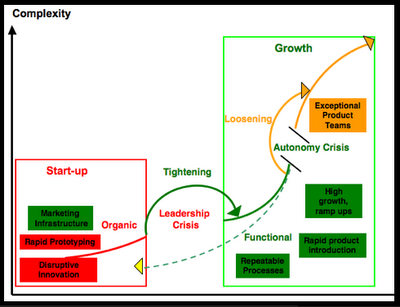Reports from the Knowledge Labs about our recent findings, research topics, and interviews with lifestyle leaders who are creating their own futures.
|
|
| |
How to stimulate your own powers of foresight. Consider the following thought provokers. Ask yourself, in these categories what are the brand new trends and forces? Which are the ones growing in importance? Which current forces are loosing their steam? Which have peaked or are reversing themselves? Which are the "wildcards" about to disrupt us in the future? POLITICAL AND TECHNICAL thought for food: Electronics, Materials, Energy, Fossil, Nuclear, Alternative, Other, Manufacturing (techniques), Agriculture, Machinery and Equipment, Distribution, Transportation (Urban, Mass, Personal, Surface, Sea, Subsurface, Space), Communication (Printed, Spoken, Interactive, Media), Computers (Information, Knowledge, Storage & Retrieval, Design, Network Resources), Post-Cold War, Third World, Conflict (Local, Regional, Global), Arms Limitation, Undeclared Wars, Terrorism, Nuclear Proliferation, Weapons of Mass Destruction, Governments (More/Less Power and Larger or Smaller Scale), Taxes, Isms: Nationalism, Regionalism, Protectionism, Populism, Cartels, Multinational Corporations, Balance of Trade, Third Party Payments, Regulations (OSHA, etc.) Environmental Impact, U.S. Prestige Abroad. SOCIAL AND ECONOMIC Food for thought:
Labor Movements, Unemployment / Employment Cycles, Recession, Employment Patterns, Work Hours / Schedules, Fringe Benefits, Management Approaches, Accounting Policies, Productivity, Energy Costs, Balance of Payments, Inflation, Taxes, Rates of Real Growth, Distribution of Wealth, Capital Availability and Costs, Reliability of Forecasts, Raw Materials, Availability and Costs, Global versus National Economy, Market versus Planned Economies, Generations: Y, X, Boomers, Elderly, Urban vs. Rural Lifestyles, Affluent vs. Poor, Neighborhoods and Communities, Planned or Organic Growth.
Got Knowledge?
|
|
| |
|
|
|
|
The Journal of 2020 Foresight
|
|
| |
|
Tuesday, August 22, 2006

Loosen to Groom More Chiefs As a Bridge Over Autonomous Waters
Chapter Four: The Tribal Territories
By Steve Howard, CKO
The Knowledge Labs
Table of Contents
Chapter One: Basecamp
Chapter Two: The Ridge
Chapter Three: The Outpost
Chapter Four: The Tribal Territories
"In-forming is the individual's personal analog to open-sourcing, outsourcing, insourcing, supply-chaining, and offshoring. In-forming is the ability to build and deploy your own personal supply chain -- a supply chain of information, knowledge, and entertainment. In-forming is about self-collaboration -- becoming your own self-directed and self-empowered researcher, editor, and selector of entertainment, without having to go to the library or the movie theater or through network television."
Thomas L. Friedman, "The World is Flat"
DOUBLE NICKEL RANCH. As the organization grows, it becomes more complex. Loose organic states evolve into tighter functional organizations. Functional structures evolve into looser divisional structures. Divisions tighten into matrix organizations that loosen into network organizations.
Journal of 2020 Foresight: During rapid growth, if independent project team members leave, the organization will be too thin in bench strength to meet its customers’ demands, correct?
Explorer: Yes. If the organization doesn’t recruit Associates, they’ll sew the seeds of their failure.
J2020F: Failure?
Explorer: Failure to make it out of a one-product or service company category into a mature organization known as a trusted brand.
J2020F: They’ll be doomed to run in place with constant turnover, while their competitors take market share from them and with it their once loyal customers, right?
Explorer: Exactly. So the talent branding efforts shift to find the right mix of Athletes and Associates, rather than Agents and Athletes.
J2020F: What about the bonking challenge?
Explorer: The other opportunity for failure arrives during a period of strength.
J2020: How so?
Explorer: Having weathered the challenges of rapid growth, the organization plateaus with significant advantages: size, financial resources, well-developed systems, and an experienced, competent staff.
J2020F: So what’s the problem?
Explorer: Top managers find it extremely difficult to switch from directing to delegating and waiting.
J2020F: Unlike the “bridge” over the “Leadership Crisis” which required tightening, this “bridge” is about loosening?
Explorer: Yes, the 180-degree different practice favors innovation, divergence, and adaptability – approaches similar to the organic start-up stage.
J2020F: So it’s only natural that those Athletic tribal team members who ushered in the tightening functional structures would resist this “bridge.”
Explorer: Especially when they accomplished so much, but it is an old story according to Danny Miller – when a strength is overused, it becomes a weakness and maybe a fatal flaw if left unchecked.
J2020F: What happens to the Agents?
Got Knowledge?
Copyright ©2002 - 2006 Aarnaes Howard Associates. All rights reserved worldwide.
6:49 AM
|
|
| |
|
|
|